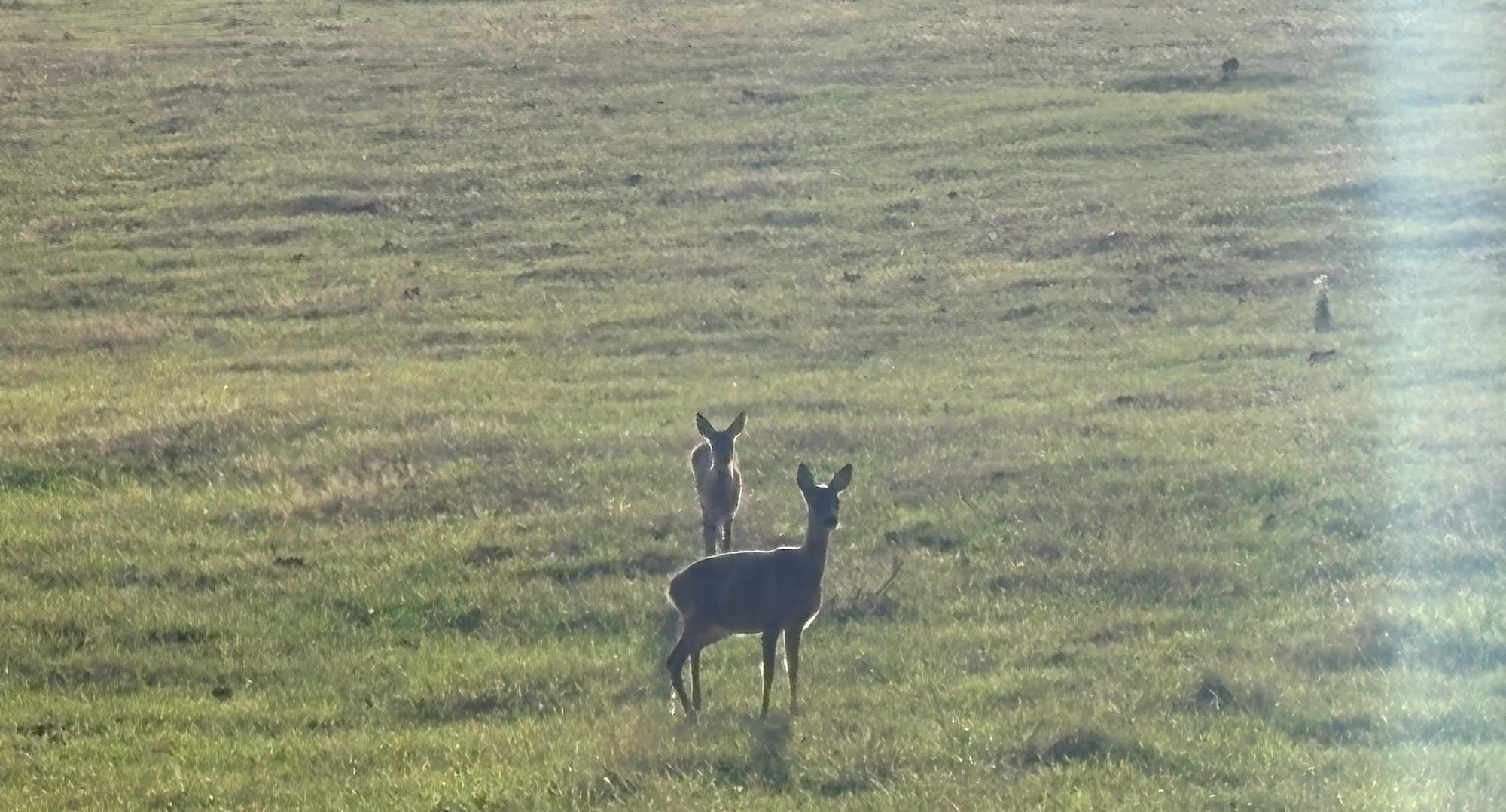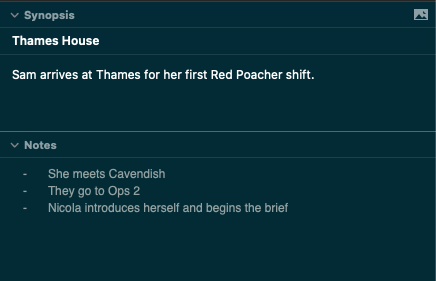Daynote - Tue 9 Sep
Oh, deer.

Hooray, got out for a walk again this morning, after a substantial break. And wow you can tell the difference. Cool air, leaves just beginning to turn. It's very definitely September. I was greeted by these two deer grazing gently in a field, which was lovely to see.
Random bit of social media admin - I finally deleted my moribund Twitter account, since I'm not going back and when I occasionally logged in to check my DMs I'd find I'd been tagged by people days or weeks ago. To avoid confusion, I've nuked it. My only social media is now Bluesky and Instagram. There's also a Threads profile I posted to a dozen times before deciding it was a Bad Take Machine, but I can't delete it without also nuking my Instagram (crafty, Zuckerberg, keep those user numbers up by refusing to let people leave one service without leaving them all). But if you see me on Twitter/X, no you didn't, that's (no longer) me. EDIT: Apparently you can now delete Threads without also deleting Instagram, so bam, that's gone now too.
ON DECK: A reasonable 571 words this morning and I finished microlining to the end of the first part of the book. It took me a while to get rolling this morning but once I did it went pretty well I think. And now I've got the next two weeks writing sorted, so I can just dive right into it for the rest of this week (in the run up to Bloody Scotland) and next week (in the come down/recovery).
TOOLS AND PROCESS: What does it look like when I 'microline' (micro outline) a scene or chapter? It's not as complicated as it sounds. Basically, when I'm writing an initial outline, it's either a series of high-level bullet points, or sometimes a 'treatment' style synopsis, with a bit more flavour and voice than you'd see in a typical synopsis.
Then, when I 'microline' I take a bullet or a chunk of text from the high level thing and I break it down. In Scrivener, that means I use the Synopsis field on each chapter/scene to write a one-line summary of the whole chapter. Then I use the Notes field to write a bullet point summary of the 'beats' of the scene and/or what it needs to achieve.

Here's a (spoiler-free) example from the next book, SOLITARY AGENTS. This is a simple, short scene, but they can be a wee bit more involved than this if it's, say, a complex action scene. But this is where I do the blocking of scenes that helps me draft them at a reasonable clip and it's also, quite often, where interesting stuff emerges as I think through the scenes before writing them.
LISTENING: Two more fab Bloody Scotland Debut Prize episodes of In My Good Books yesterday and today - first up is Claire Wilson, author of FIVE BY FIVE, then today's episode is Natalie Jayne Clark, author of THE MALT WHISKY MURDERS.
WATCHING: No telly last night, as we had visitors. But I suspect tonight we'll finish off KING & CONQUEROR.
READING: Last night I finished off TIME WARPED by Adam Simcox and it delivered. Fantastic book with a late twist I absolutely didn't see coming. And it's an incredibly vivid depiction of London over the decades. Highly recommended.
LINK: I really, really enjoyed this newsletter from SF writer Elizabeth Bear about how to 'network' (aka make friends) at SF conventions. It's fantastic advice that equally applies to other book events in other genres and I wish I'd read it twenty years ago. Some of the most amazing friendships in my adult life have come from the book world and a large part of that is focusing on your own cohort. See also my recent post about looking for the secret key to publishing.
UP NEXT: Counting down to the first day of Bloody Scotland on Friday! I'm working in town on the Thursday, so I suspect I may need to pack tomorrow since I'll be getting back later on the Thursday night. We'll see if I successfully manage to do that. In the meantime, I'm powering ahead on the DRIFT draft (hah, that's fun to say) and trying not to think too hard about the prize ceremony on Friday night.
Onward!
